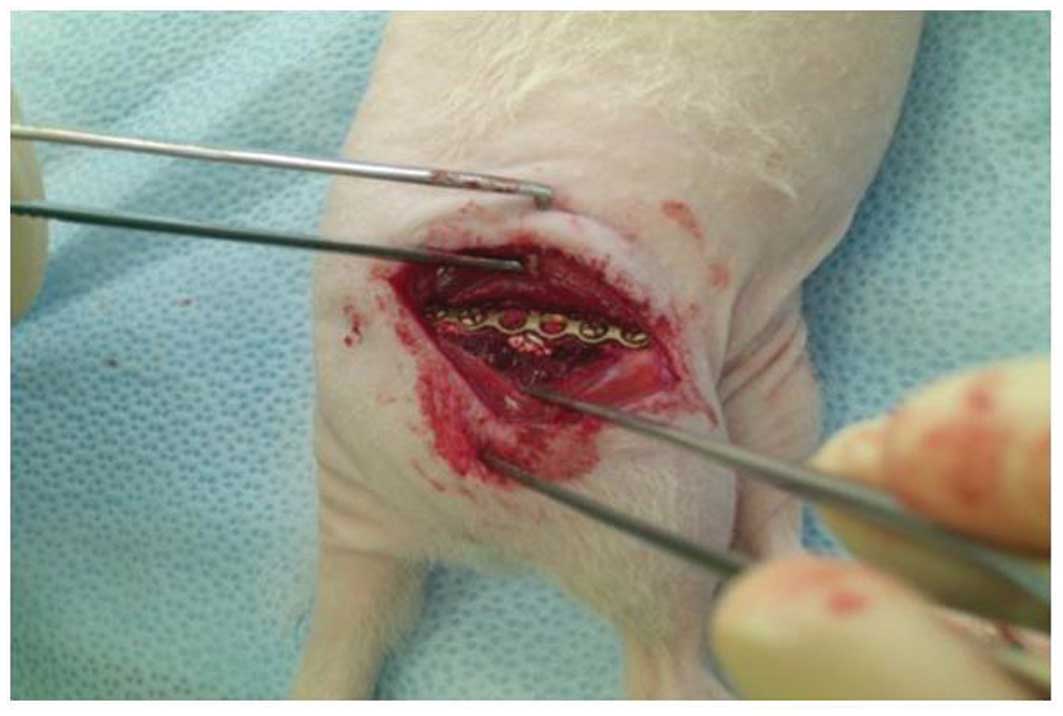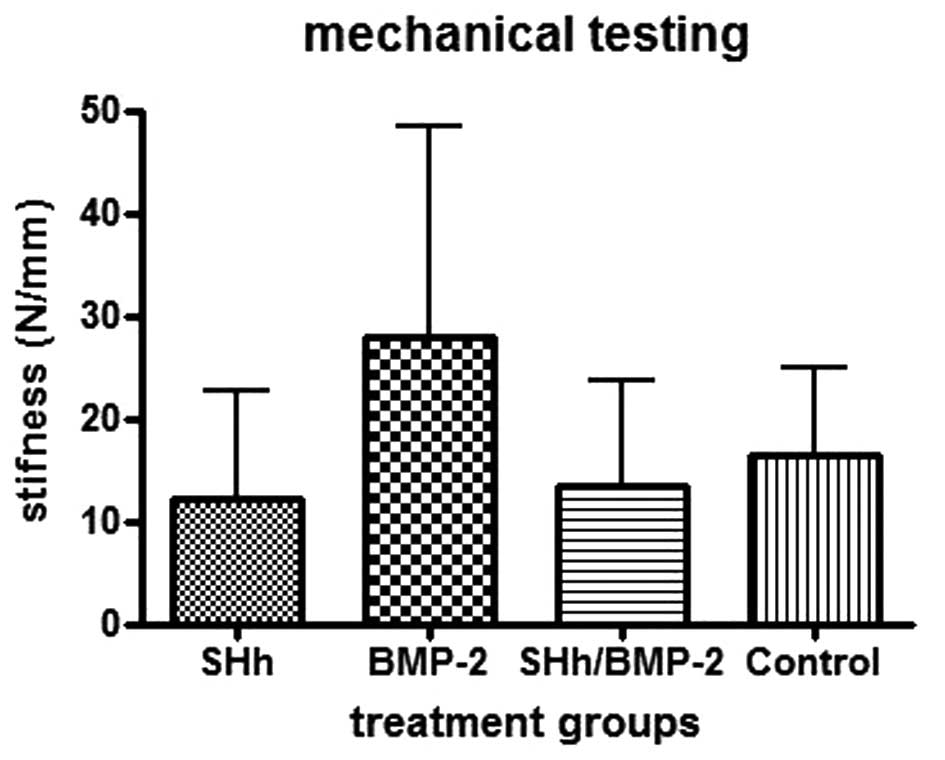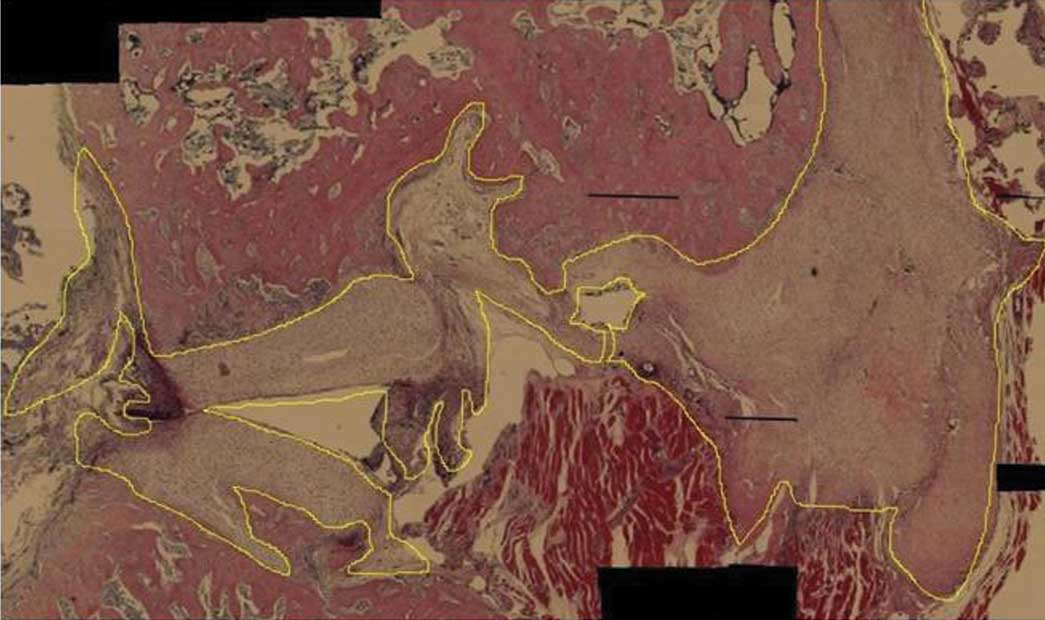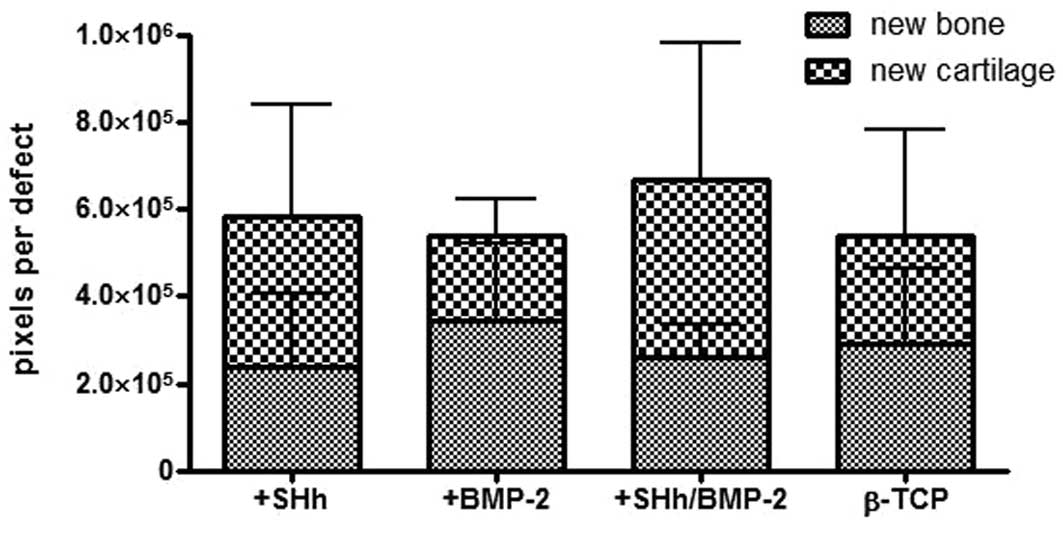|
1
|
Fietz MJ, Concordet JP, Barbosa R, Johnson
R, Krauss S, McMahon AP, Tabin C and Ingham PW: The hedgehog gene
family in Drosophila and vertebrate development. Dev Suppl. 3–51.
1994.
|
|
2
|
Chung UI, Schipani E, McMahon AP and
Kronenberg HM: Indian hedgehog couples chondrogenesis to
osteogenesis in endochondral bone development. J Clin Invest.
107:295–304. 2001. View
Article : Google Scholar : PubMed/NCBI
|
|
3
|
Day TF and Yang Y: Wnt and hedgehog
signaling pathways in bone development. J Bone Joint Surg Am.
90(Suppl 1): 19–24. 2008. View Article : Google Scholar : PubMed/NCBI
|
|
4
|
Ito H, Akiyama H, Shigeno C, Iyama K,
Matsuoka H and Nakamura T: Hedgehog signaling molecules in bone
marrow cells at the initial stage of fracture repair. Biochem
Biophys Res Commun. 262:443–451. 1999. View Article : Google Scholar : PubMed/NCBI
|
|
5
|
Spinella-Jaegle S, Rawadi G, Kawai S,
Gallea S, Faucheu C, Mollat P, Courtois B, Bergaud B, Ramez V,
Blanchet AM, Adelmant G, Baron R and Roman-Roman S: Sonic hedgehog
increases the commitment of pluripotent mesenchymal cells into the
osteoblastic lineage and abolishes adipocytic differentiation. J
Cell Sci. 114:2085–2094. 2001.
|
|
6
|
Yuasa T, Kataoka H, Kinto N, Iwamoto M,
Enomoto-Iwamoto M, Iemura S, Ueno N, Shibata Y, Kurosawa H and
Yamaguchi A: Sonic hedgehog is involved in osteoblast
differentiation by cooperating with BMP-2. J Cell Physiol.
193:225–232. 2002. View Article : Google Scholar : PubMed/NCBI
|
|
7
|
Enomoto-Iwamoto M, Nakamura T, Aikawa T,
Higuchi Y, Yuasa T, Yamaguchi A, Nohno T, Noji S, Matsuya T, Kurisu
K, Koyama E, Pacifici M and Iwamoto M: Hedgehog proteins stimulate
chondrogenic cell differentiation and cartilage formation. J Bone
Miner Res. 15:1659–1668. 2000. View Article : Google Scholar : PubMed/NCBI
|
|
8
|
Edwards PC, Ruggiero S, Fantasia J,
Burakoff R, Moorji SM, Paric E, Razzano P, Grande DA and Mason JM:
Sonic hedgehog gene-enhanced tissue engineering for bone
regeneration. Gene Ther. 12:75–86. 2005. View Article : Google Scholar : PubMed/NCBI
|
|
9
|
Urist MR, Lietze A and Dawson E:
Beta-tricalcium phosphate delivery system for bone morphogenetic
protein. Clin Orthop Relat Res. 187:277–280. 1984.PubMed/NCBI
|
|
10
|
Tazaki J, Murata M, Akazawa T, Yamamoto M,
Ito K, Arisue M, Shibata T and Tabata Y: BMP-2 release and
dose-response studies in hydroxyapatite and beta-tricalcium
phosphate. Biomed Mater Eng. 19:141–146. 2009.PubMed/NCBI
|
|
11
|
Garrison KR, Shemilt I, Donell S, Ryder
JJ, Mugford M, Harvey I, Song F and Alt V: Bone morphogenetic
protein (BMP) for fracture healing in adults. Cochrane Database.
Syst Rev. 16:CD0069502010.PubMed/NCBI
|
|
12
|
Bauer TW and Muschler GF: Bone graft
materials. An overview of the basic science. Clin Orthop Relat Res.
371:10–27. 2000. View Article : Google Scholar : PubMed/NCBI
|
|
13
|
Niemeyer P, Krause U, Fellenberg J, Kasten
P, Seckinger A, Ho AD and Simank HG: Evaluation of mineralized
collagen and alpha-tricalcium phosphate as scaffolds for tissue
engineering of bone using human mesenchymal stem cells. Cells
Tissues Organs. 177:68–78. 2004. View Article : Google Scholar : PubMed/NCBI
|
|
14
|
Schultheiss J, Seebach C, Henrich D,
Wilhelm K, Barker JH and Frank J: Mesenchymal stem cell (MSC) and
endothelial progenitor cell (EPC) growth and adhesion in six
different bone graft substitutes. Eur J Trauma Emerg Surg.
37:635–644. 2011. View Article : Google Scholar
|
|
15
|
Marigo V, Roberts DJ, Lee SM, Tsukurov O,
Levi T, Gastier JM, Epstein DJ, Gilbert DJ, Copeland NG, Seidman
CE, et al: Cloning, expression, and chromosomal location of SHH and
IHH: two human homologues of the Drosophila segment polarity gene
hedgehog. Genomics. 28:44–51. 1995. View Article : Google Scholar : PubMed/NCBI
|
|
16
|
Ohura K, Hamanishi C, Tanaka S and Matsuda
N: Healing of segmental bone defects in rats induced by a
beta-TCP-MCPM cement combined with rhBMP-2. J Biomed Mater Res.
44:168–175. 1999. View Article : Google Scholar : PubMed/NCBI
|
|
17
|
Drosse I, Volkmer E, Seitz S, Seitz H,
Penzkofer R, Zahn K, Matis U, Mutschler W, Augat P and Schieker M:
Validation of a femoral critical size defect model for orthotopic
evaluation of bone healing: a biomechanical, veterinary and trauma
surgical perspective. Tissue Eng Part C Methods. 14:79–88. 2008.
View Article : Google Scholar : PubMed/NCBI
|
|
18
|
Niedhart C, Maus U, Redmann E,
Schmidt-Rohlfing B, Niethard FU and Siebert CH: Stimulation of bone
formation with an in situ setting tricalcium phosphate/rhBMP-2
composite in rats. J Biomed Mater Res A. 65:17–23. 2003. View Article : Google Scholar : PubMed/NCBI
|




















